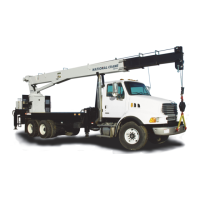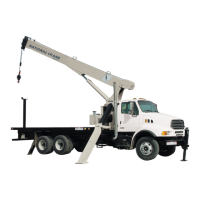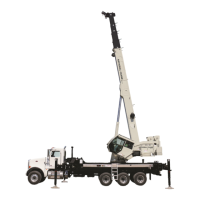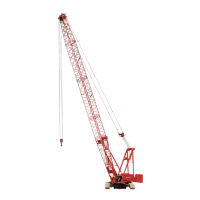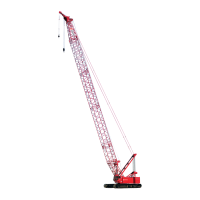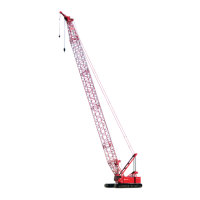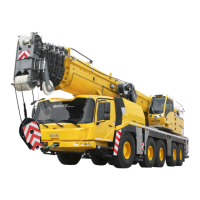INSTALLATION 1400H OPERATOR AND SERVICE MANUAL
7-28 Published 10-30-2014 Control # 040-09
sensor so that the system reads the angle to ±0.0° of the
measured angle. Press “OK” when the sensor is
mechanically set, this confirms the mechanical
adjustment.
The display should now read BOOM TO 40.0 DEG,
XX.X DEG, EXIT. Raise boom to approx. 40° (range 35°
to 45°). When the boom angle is within the calibration
range, the screen will add “CHANGE” & “OK” text.
Measure the boom angle with the inclinometer.
Compare this with the displayed angle and select
“CHANGE” and press “OK”. Use the “UP” & “DOWN”
arrow buttons to adjust the displayed angle to match the
measured angle. Once the display shows the correct
angle press “OK”.
The display will now define a mid correction angle,
65 DEG. Raise boom to approx. 65° and repeat above
steps.
The display will then define a high correction angle,
75 DEG. Raise boom to approx. 75° and repeat above
steps.
After pressing “OK” the system will request the
angle sensor calibration be saved. Select “YES” then
press “OK” to confirm calibration.
Press “EXIT” to leave calibration or select
“CALIBRATE SENSORS” to calibrate another sensor.
12. After selecting “CALIBRATE SENSORS” select “LEN” to
begin length sensor calibration. Screen will read FULLY
RETRACT MAIN BOOM XX.X ft., OK & EXIT. Refer to
load chart and elevate the boom to an angle that allows
boom to be fully extended. Verify the retracted boom
length is correct and press “OK”. The screen will now
read FULLY EXTENDED MAINBOOM XX.X ft. OK &
EXIT. Fully extend the main boom and press “OK”.
NOTE: The LMI system measures boom length from the
pivot pin to the center of the boom tip sheave. This
varies slightly from length indicated on Load Chart (see
table below).
After pressing “OK”, the system will request the
length sensor calibration be saved. Selected “YES” then
press “OK” to confirm calibration.
Press “EXIT” to leave calibration.
Verify length and angle indication are accurate and
replace cable reel cover.
13. Load indicating accuracy is verified by lifting known
loads. Select one or more known test loads that will load
the crane to full capacity, preferably a load that can fully
load the crane at more than one rated boom length. The
test loads including blocks, slings, etc. are to be known
accurate within ±1%.
Starting with a rated boom length and a short radius
(high boom angle), lift a load that is somewhat lower
than rated capacity at this condition. Increase the radius
slowly by decreasing the boom angle until the limit signal
is activated. Measure and record radius along with the
test load. Complete this for each test condition. If you
have selected a test load that is within the crane's
capacity at the next longer rated boom length (closer
load radius at higher boom angle), you can reposition
the same test load for an additional test condition. A
minimum of four tests with one or more at full boom
extension are recommended.
For each test condition, refer to the Load Capacity
Chart and determine the rated load for the measured
radius condition. If the measured radius is between
those listed on the Capacity Chart, the rated load (for
this test work only) shall be determined by linear
interpolation.
The load indicating accuracy is determined by this
formula:
TEST LOAD/RATED LOAD x 100 = % of Rated Load
The actual test load which activates the limit signal
is not to be less than 90% of the rated load nor more
than 100% of the rated load for the corresponding actual
load radius.
MODEL
CAP. CHART
RETRACT
CAP. CHART
EXTEND
LMI
RETRACT
LMI
EXTEND
14100H
14127H
30 ft
31 ft
100 ft
127 ft
30.3 ft
31.1 ft
99.6 ft
126.7 ft
The LMI system measures boom length from the pivot pin to the center of the
boom tip sheave. This varies slightly from length indicated on Load Chart.
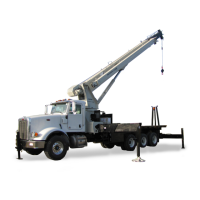
